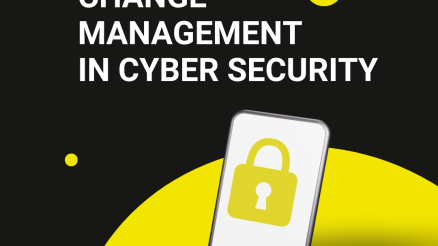Netflix is one of the world’s leading internet television networks with over 100 million members in 190 countries. It has a wide variety of award-winning original programming, documentaries, TV shows and feature films.
Netflix offers a subscription services to its users to watch all its content online. Now Netflix is producing its own content and also adding quality content of other producers for its users. It has become one of the popular online video streaming web portals and been on first top 50 websites globally.
But Netflix transformed itself and it embraced change with ever changing technology and business market.
What is Netflix successfully change story? How it happened and what challenges it faced to cope with change?
For this questions, we are presenting here Netflix change management case study.
This case study will explore how Netflix has successfully managed change in the past and present. It will also provide recommendations for other businesses on how to approach change management.
The story of Netflix change management
Netflix is a streaming service for movies and TV shows. It has a library of over 200,000 titles that you can watch on your phone, tablet, computer, or TV. You can also download shows to watch offline. Netflix offers a variety of plans, including a basic plan that starts at $7.99/month and a premium plan that starts at $11.99/month.
Netflix was founded in 1997 by Reed Hastings and Marc Randolph. They started the company with the intention of offering a DVD-by-mail service. In 2007, they introduced streaming, which allowed instant streaming of TV shows and movies on your computer. In 2013, they introduced the concept of ” binge watching” with the release of House of Cards, which all episodes of the first season were released at once so that viewers could watch them all in one sitting. In 2015, they launched their own production company, Netflix Originals, which produces movies and TV shows that are only available on Netflix.
Netflix has undergone several changes since it was founded. The most notable change was the introduction of streaming in 2007, which changed the way people watched TV and movies.
Netflix made two big changes since its started business. First, it introduced the subscription option in 1999 to store DVD rental. This option allows users to rent unlimited DVD rental without late fees. It was a drastic change in the business model of Netflix.
The second big change was happened in 2007, when it launched an online video streaming service. It was a highly disruptive change which completely revolutionalized the concept of watching movies and Tv shows online. Consumers also welcomed this change because this change was the need of time. Because everyone was using smartphone, laptops and computers and trend of going to cinema to watch a movie was on decline. Netflix also used social media and present its content to reach out their customers.
Netflix’s Change Management Process
Netflix’s change management process is a model for other organizations to follow. The company has a dedicated team that is responsible for managing change. This team works closely with Netflix’s engineers and product managers to ensure that changes are made in a controlled and safe manner. Netflix has also implemented a series of mechanisms to help prevent and mitigate the impact of changes. For example, all changes are assessed for risk before they are implemented. Netflix also conducts regular post-change reviews to identify any issues that may have arisen from the change. As a result of these measures, Netflix has been able to successfully manage change while minimizing disruptions to its business.
How Netflix manages organizational change forces
There are many factors that affect organizational change. But primarily these are two broad forces of organizational change: a) external and b)internal. Among the external forces there were rapid changes in technology, globalisation, social media etc. These all external factors led to organizational change at Netflix. .For instance, people’s expectation and behaviour, likes and dislikes in terms of watching content was changing due to new technology. New tools, techniques were also affecting business of movies watching and TV shows. But Netflix managed all those forces of change and responded in a big way to meet expectations of its consumers.
There were also internal forces of organizational change like new skills of employees and employees expectations, need of change in work environment, cost of business model etc. Netflix taken all these factors into consideration before going to execute change. And that’s the reason behind their successfully implementation of change.
How Netflix Uses Data to Drive Change
Netflix’s data team is made up of over 800 people, including statisticians, analysts, and engineers. Their mission is simple: “to help Netflix understand its business and the world.” To do this, they collect and process tons of data every day. This data comes from a variety of sources, including things like clickstream data (what you watch and when you watch it), surveys, social media activity, third-party research, and more.
Once all this data is collected, it’s organized and stored in a massive data warehouse. This is where things start to get really interesting. The team then uses a combination of qualitative analysis (looking at the meaning behind the numbers) and quantitative analysis (using statistical models to draw conclusions) to glean insights from the data. These insights are then used to inform everything from what new shows to green-light to which actors should star in them.
For example, let’s say the team notices that a lot of people who watch Stranger Things also tend to watch You. They might then use this information to suggest Stranger Things to people who haven’t watched it yet or recommend You to people who have finished Stranger Things and are looking for something similar. This is just one small example of how Netflix uses data to drive change within its business.
It’s clear that data plays a big role in everything Netflix does. From deciding which new shows to produce to suggesting content for individual users, data is at the heart of the company’s decision-making process. And as our watching habits continue to be tracked and analyzed, we can expect even more personalized recommendations and a more tailored streaming experience overall.
Learning from drastic changes
In order to maintain a successful business, it is important to occasionally review your company’s methods and make changes where necessary. This is especially true in today’s ever-changing marketplace. Netflix, a leading provider of streaming video content, knows this well. In 2011, the company made a drastic change to its business model that upset many of its customers. However, thanks to careful planning and execution, the change was ultimately successful and resulted in increased profits for the company.
The introduction of drastic changes can be a difficult process, but with proper planning and execution, it can be successful. Netflix provides a great example of how to successfully navigate a major change. By carefully considering the needs of its customers and taking the time to properly execute its plans, the company was able to weather the storm and come out stronger than ever before.
Final Words
Netflix is a great example of change management. Business organizations can learn from Netflix change management case study to keep up with the latest changes and trends. Netflix has been successful in managing change by using data to drive their decisions. There are multiple lessons for other business entities that how Netflix capitalised on its human resources and rightly understood needs of modern-day customers.



